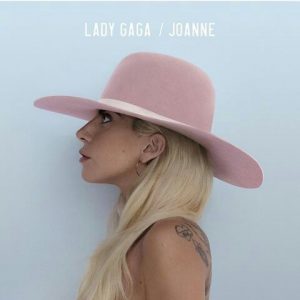REVIEW: Lady Gaga recreates her image in newest album Joanne
Lady Gaga is reinventing herself. The critical and commercial failure of her third album, Artpop, was largely due to an unfortunate overshadowing of Gaga’s musical talents by her eccentric persona. Since then, Gaga has attempted to strip away this persona to showcase her raw singing talent, first by collaborating with legend Tony Bennett on the critically lauded jazz offering Cheek to Cheek, and now with her newest album, Joanne. When an artist who is heavily associated with a bombastic image seeks to change, the question becomes whether she can transition without losing the energy that attracted audiences in the first place. Does Gaga do this successfully in Joanne? The results are rather mixed.

Photo from Interscope Records
The Mother Monster returns · Lady Gaga released her fifth album, Joanne, on Friday. The album is a bold attempt for the pop star to put aside her eccentric showmanship and expose a more intimate side of herself.
Throughout the album, Gaga explores genres beyond her typical high-energy synthpop and EDM, instead turning to the more mid-tempo styles of soft rock and country. Many tracks are also characterized by funk and Motown, partially thanks to producer Mark Ronson, who has worked with more classically inclined artists such as Adele and Amy Winehouse. Gaga also showcases her vocal skills in several ballads featuring acoustic guitar and piano. Overall, although there are several of her expected up-tempo synthpop tunes, the production of Joanne is more subdued, leaning toward traditional influences and prioritizing Gaga’s voice first.
In Joanne, Gaga does what Nashville acts such as Florida Georgia Line and Luke Bryan have been spectacularly failing to do for years, which is to gracefully harmonize the electronic sound of the 21st century with the conservative country genre. Gaga has dabbled in country before — see her rollicking 2011 hit “You and I” — but she takes it to the next level here with a barrage of arresting songs influenced by the genre; Gaga fuses electronic sounds into the cowboy-themed banger “John Wayne,” breaks out the twangy guitar for the delightfully catchy “A-Yo” and even emulates Spaghetti Western composer Ennio Morricone in “Sinner’s Prayer.”
Besides dipping into country, Gaga also exposes listeners to her talent for creating up-tempo piano songs, a skill that mostly went under the radar in her previous EDM. The bouncy and infectiously joyous songs that result are the Motown-influenced “Come to Mama,” as well as the saxophone- and piano-centric “Just Another Day.” Albeit a little too ingrained in the show tunes sound, these tracks effectively showcase Gaga’s talents as both an instrumentalist and a singer-songwriter.
The missteps in Joanne mostly occur when Gaga attempts to tackle slower, more emotional material. Perhaps in reaction to the overproduction that began to muddle her sound in Born this Way, Joanne wisely refrains from flashy production, with the exception of the misguided outlier “Perfect Illusion.” However, the slower beats of Joanne are not always a plus. Gaga shines when she is given upbeat, fun music to tackle; conversely, in slower tracks like “Grigio Girls,” she sounds sluggish and even boring. Unfortunately, Joanne lacks the vibrancy of past offerings, threatening the quality that made her so refreshing upon her debut in the often paint-by-numbers pop industry. This carries over to Joanne’s many ballads, which expose Gaga’s tendency to oversing when she delivers more serious material; some examples of this are the dreary and strained “Angel Down” and “Million Reasons.” On the plus side, consistent with Joanne’s aim of stripping away Gaga’s pretenses, the album takes a dive into lyrical intimacy. This album, however, contains introspective songs like “Joanne,” a stripped-down tribute to Gaga’s deceased aunt, and “Diamond Heart,” which likely refers to the singer’s sexual assault when she was a teenager. These tracks expose Gaga’s range as a songwriter and also her vulnerability as an individual, not simply an emblem of sexual empowerment and eccentricity.
Ultimately, Joanne is a polarizing album. On one hand, it seems that Gaga does all of the right things to reinvent herself; she highlights her vocals and addresses more intimate subjects. On the other, many fans may rightfully claim that Joanne feels like Lady Gaga trying to restrain herself. However, it is also Lady Gaga in transition, and the artist is still struggling to forefront this new, more authentic portrayal of herself while not completely discarding the exciting performer who captured the public imagination.
